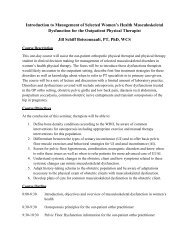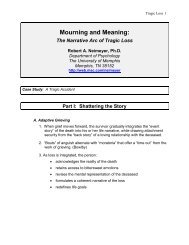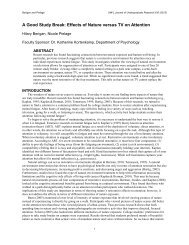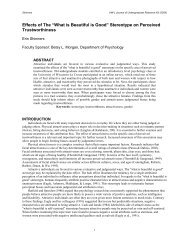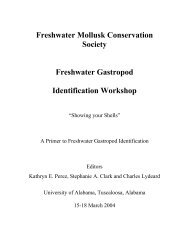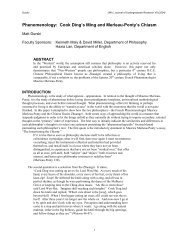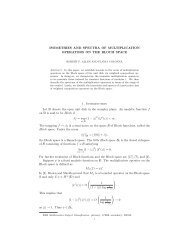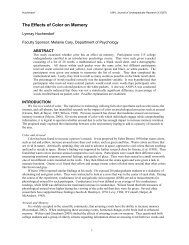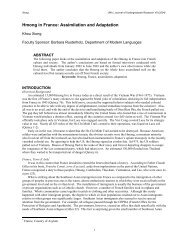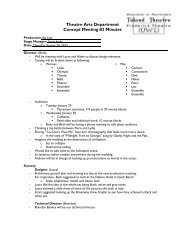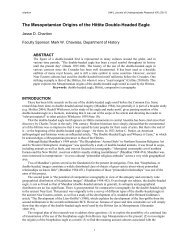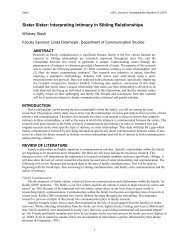Succinea cali<strong>for</strong>nica P. Fischer and Crosse, 1878 G1G2 CA Succinea campestris Say, 1817 G4 FL, GA, LA, MD, ME, NC, NJ, SC, VA Succinea floridana Pilsbry, 1905 G2G3 FL AL, AR, FL, IA, IL, KS, KY, LA, MO, NC, NE, NM, OK, Succinea <strong>for</strong>sheyi I.Lea, 1864 G4 TN, TX, WI Succinea greerii Tryon, 1866 G3 AL, LA, MS, OK, TN, TX AL, AR, AZ, FL, KS, KY, LA, MO, MS, NM, OK, TN, TX, Succinea grosvenori I. Lea, 1864 G5 UT, WY; Canada: AB, MB, NT, ON, SK AL, AR, DE, FL, GA, IN, KS, MD, ME, MO, NC, ND, NE, Succinea indiana Pilsbry, 1905 G5 NJ, NY, OK, SC, SD; Canada: ON Succinea luteola Gould, 1848 G4 AR, AZ, CA, FL, LA, MS, NM, SD, TX Succinea oregonensis I. Lea, 1841 G2G4 CA, ID, OR, UT, WA; Canada: AB, BC Succinea paralia Hubricht, 1983 G2 AL, FL, TX Succinea pennsylvanica Pilsbry, 1848 G1G2 NY, PA Succinea rusticana Gould, 1846 G2G3 AK, CA, ID, OR, UT, WA; Canada: BC Succinea solastra Hubricht, 1961 G2G3 TX Succinea strigata Pfeiffer, 1855 G4 AK; Canada: BC, SK, YT Succinea unicolor Tryon, 1866 G3G4 AL, AR, FL, GA, LA, MI, MS, NC, SC, TX Succinea urbana Hubricht, 1961 G2G3 AL, MS Succinea vaginacontorta C.B. Lee, 1951 G2G3Q KS, NM, TX Succinea wilsonii I. Lea, 1864 G4 DE, GA, MD, ME, NC, NJ, NY, SC, VA; Canada: NS, PE Thysanophoridae Kathryn E. Perez, Duke <strong>University</strong> Hojeda inaguensis is found in moist leaf litter in hammocks in Florida. Its range also includes the Bahamas. The Thysanophora species are small, helicoid to flattened snails typically found under logs, dead palm fronds in woods, and rocks, but are also found in open scrublands. T. plagioptycha is usually found in wet places (Hubricht, 1985). Individuals <strong>of</strong> Microphysula cookei prefer wet montane coniferous <strong>for</strong>est, usually in wet places under vegetated rocks (Forsyth, 2004). M. ingersolii prefers subalpine meadows, spruce <strong>for</strong>ests, and Trembling Aspen groves (Forsyth, 2004). TAXON AUTHOR G- RANK DISTRIBUTION Hojeda inaguensis (Weinland, 1880) GH FL Microphysula cookei (Pilsbry, 1922) G4 AK, AZ, WA; Canada: BC Microphysula ingersolli (Bland, 1875) G5 AZ, ID, MT, NM, OR, TX, UT, WA, WY; Canada: AB, BC Thysanophora hornii (Gabb, 1866) G5 AZ, NM, TX Thysanophora plagioptycha (Shuttleworth, 1854) G5 FL, TX 57
Urocoptidae Kathryn E. Perez, Duke <strong>University</strong> Urocoptidae is a large family related to the Bulimulidae and Achatinidae. The shells <strong>of</strong> snails in this family tend to be elongate with a tapering spire and an expanded apertural lip. The two genera (and species) found in Florida are similarly elongate, but Cochlodinella poeyana is smaller with wider whorls and typically has a decollate spire in contrast with Microceramus pontificus which is somewhat larger with a wider shell. The shape <strong>of</strong> the aperture is also very different. The majority <strong>of</strong> U.S. Urocoptids are in the genus Holospira. These are snails <strong>of</strong> the limestone terrain <strong>of</strong> the arid southwestern U.S. Holospira and related genera found in Mexico are very species-rich. Important characteristics <strong>for</strong> identification <strong>of</strong> Holospira species are the length and width <strong>of</strong> the shell, the number <strong>of</strong> whorls, the smoothness or ribbing <strong>of</strong> the shell, and the shape (angulate, ovate, or oblong) and folding <strong>of</strong> the aperture. For final identification the shell must be opened, usually by cutting or grinding away the penultimate whorl to look at the central axis <strong>of</strong> the shell. Lamellae are associated with the central axis <strong>of</strong> the shell, especially in the final whorl. These lamellae are variously developed and shaped in different species. Species <strong>of</strong> Holospira tend to live in isolated large colonies and be very restricted in geographic location, <strong>for</strong> example, found only in single mountain ranges. One exception to this is Metastoma roemeri which is found throughout central Texas to the Rio Grande Valley <strong>of</strong> New Mexico. It is most abundant around New Braunfels, Texas. Other Holospira species are found hanging attached to or under limestone ledges, a few species in West Texas are associated with Selaginella (Resurrection plant). They can also be found along canyon walls, under stones, dead Yucca stems, dead stems <strong>of</strong> Sotol and in limestone talus (Metcalf & Smartt, 1997). Specific localities and habitat discussions <strong>of</strong> each New Mexico Holospira species can be found in Land Snails <strong>of</strong> New Mexico (Metcalf & Smartt, 1997). TAXON AUTHOR G- RANK DISTRIBUTION Cochlodinella poeyana (d'Orbigny, 1841) G1G2 FL Coelostemma pyrgonasta F. G. Thompson, 1989 Gilbertson and Worthington, G1 NM Holospira animasensis 2003 G1G2 NM Holospira arizonensis Stearns, 1890 G2 AZ Holospira campestris Pilsbry and Ferriss, 1915 G3Q AZ Holospira chiricahuana Pilsbry, 1905 G2G3 AZ Holospira cionella Pilsbry, 1905 G3Q AZ Holospira cockerelli Dall, 1897 G1 NM Holospira crossei Dall, 1895 G2 NM 58
- Page 1 and 2:
A Guide for Terrestrial Gastropod I
- Page 3 and 4:
Acknowledgements & Sponsors For pro
- Page 5 and 6:
Glossarry of lannd snail terminoolo
- Page 7 and 8: Discoidaal - a wider-t than-high, v
- Page 9 and 10: Spire - thhe top whorl ls of the sh
- Page 11 and 12: Basic Ranks: GX- Presumed Extinct:
- Page 13 and 14: Land Snail Collection Strategies Ma
- Page 15 and 16: placed, or samples can be obtained
- Page 17 and 18: Diversity and higher-level systemat
- Page 19 and 20: Annulariidae Kathryn E. Perez, Duke
- Page 21 and 22: Bradybaenidae Mark A. Ports, Great
- Page 23 and 24: caused cars to run off roads. Rabdo
- Page 25 and 26: Ceriidae Kathryn E. Perez, Duke Uni
- Page 27 and 28: Discidae Thiele, 1931 (Patulidae Tr
- Page 29 and 30: Haplotrema caelatum (Mazyck, 1886)
- Page 31 and 32: Helicodiscidae Barry Roth, San Fran
- Page 33 and 34: precipatation during the day. Those
- Page 35 and 36: Helminthoglypta vasquezi Roth and H
- Page 37 and 38: Humboldtianidae Kathryn E. Perez, D
- Page 39 and 40: Oleacinidae Kathryn E. Perez, Duke
- Page 41 and 42: Oreohelix florida Pilsbry, 1939 Gre
- Page 43 and 44: Philomycidae Megan E. Paustian, Uni
- Page 45 and 46: This family is widespread in North
- Page 47 and 48: Inflectarius magazinensis (Pilsbry
- Page 49 and 50: Triodopsis hopetonensis (Shuttlewor
- Page 51 and 52: Pupillidae Jeffrey C. Nekola, Unive
- Page 53 and 54: Vertigo alabamensis G.H. Clapp, 191
- Page 55 and 56: species has even been observed fora
- Page 57: The taxonomy of the North American
- Page 61 and 62: TAXON AUTHOR G- RANK DISTRIBUTION I
- Page 63 and 64: Zonitidae Amy S. Van Devender, Boon
- Page 65 and 66: Nesovitrea hawaiiensis (Ancey, 1904
- Page 67 and 68: References Baker, H.B. 1922. Notes
- Page 69 and 70: International Commission on Zoologi
- Page 71 and 72: Pearce, T.A. and A. Örstan, 2006.
- Page 73: pennsylvanicus (Green, 1827), Mesod



